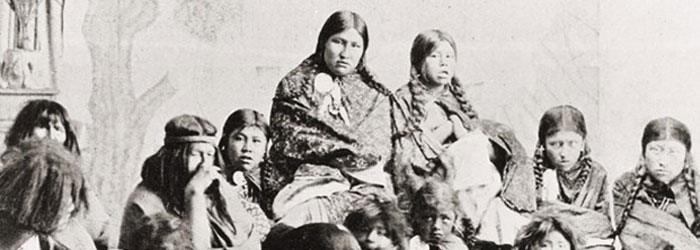Settlement patterns
The Tehuelche were a nomadic hunter-gatherer society whose groups traveled around from season to season across a wide range, following the same routes for centuries, making them into actual roads. Along these routes the people had their traditional hunting grounds and established rest stops (aiken), giving them names such as Pali Aike, Juniaike, and so on. Their traditional tent-like dwellings were simple and easy to dismantle and transport. They were made of wooden frames covered with layers of waterproofed hides, originally of guanaco skin and later horse skin. One of these tents could house from 8 to 10 people, large enough for a nuclear family and a few close relatives. The sleeping spaces were located in the back, though the single women slept in the center of the dwelling, near the fire, accompanied by the children and dogs. The Tehuelche usually wintered in one camp and moved around more in summer, mainly for reasons of food supply, water or health. The introduction of horses intensified the Tehuelche’s nomadic way of life, expanding their geographic range.


